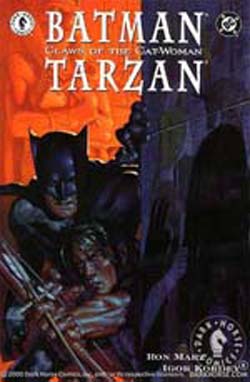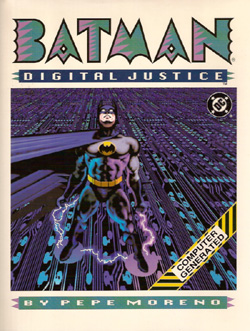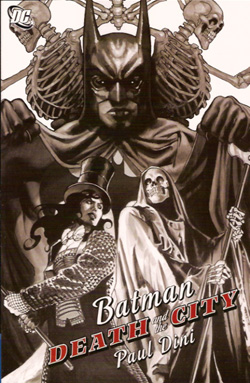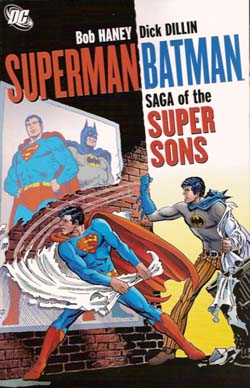
By Ed Brubaker & various (DC Comics)
ISBN13: 978-1-84576-724-2
Post Infinite Crisis, we’ve just been treated to yet another origin of The Joker in the more or less monthly pages of Batman Confidential, but not so very long ago (2005 in fact) writer Ed Brubaker and artist Doug Mahnke treated us to a rather gripping treatment based on the original 1940s tales, with a tip of the hat to the Steve Englehart/Marshall Rogers tales of the early seventies (see Batman Chronicles Vol. – 1 ISBN: 1-84576-036-0 and Batman: Strange Apparitions – ISBN: 1-84023-109-2 for those classics) in the form of an impressive prestige one-shot.
The title and apparently the original inspiration for the Clown Prince of Crime himself come from Paul Leni’s seminal 1928 film classic starring Conrad Veidt in the title role. The plot concerns the actions of innocent Gwynplaine who had a permanent smile carved into his face by the King as a punishment for his father’s crimes…
Set not long after the events of Batman: Year One (ISBN: 1-84576-158-8), The Man Who Laughs sees Captain Jim Gordon recognise that Gotham City has been changed forever when an outlandish and macabre serial killer goes on a very public, attention-seeking murder spree. Even his secret ally and vigilante outlaw The Batman is daunted by the sheer scale and audacity of the chalk-faced lunatic who seems utterly unstoppable…
The remainder of this book collects a three-part adventure from Detective Comics #784-786. Brubaker here scripts a generational serial-killer mystery guest-starring the Golden Age Green Lantern, who was the superhero-in-residence of Gotham City in the 1940s and 1950s.
‘Made of Wood’ illustrated by Patrick Zircher, Aaron Sowd and Steve Bird, finds Batman hunting a murderer who originally terrorised the populace in 1948 – even assassinating the then-Mayor – before simply disappearing. Matters are further complicated when a guilt-plagued Green Lantern returns determined to close the case he fumbled nearly 50 years previously…
Brubaker is an excellent writer at the peak of his abilities here and the art on both stories is effective and compelling. This is one of the better Batman collections of recent years and a great treat for any fan or casual browser.
© 2003, 2005, 2008 DC Comics. All Rights Reserved.









